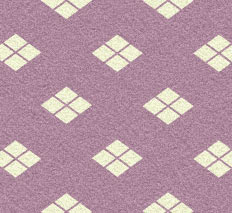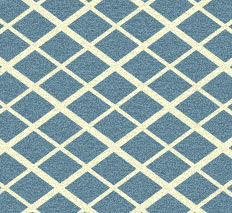|
||
 |
||
1 Saiwaibishi 幸菱: auspicious diamond, also called tsumatoribishi 爪取菱 or senkenbishi 千間菱, also written 先剣菱; a motif of ten large and small diamond shaped flower motifs, hanabishi 花菱; a lively and feminine pattern frequently used for girl's wear in the Edo period. See *hanabishi mon'you 花菱模様.
2 *Matsukawabishi 松皮菱: pine bark diamond, also called nakafutobishi 中太菱, a diamond with staggered edges. Especially popular in the Momoyama and Edo periods, when it was used for *kosode 小袖 and noh costumes *noushouzoku 能装束.
3 *Yotsuwaribishi 四割菱 : Also called takedabishi 武田菱, after the feudal lord Takeda who used the motif as a family crest. A diamond divided into four contiguous small diamonds by two intersecting lines.
4 Itsutsubishi 五菱: A motif created by five diamonds, each sharing two sides to create a star-shaped figure.
5 Toobishi 遠菱: distant diamonds, four diamonds grouped some distance apart. Frequently used by the imperial family for fabrics such as the gauze used for the formal headpiece, kanmuri 冠, or twilled clothes for robes worn under the outer garments, shitagasane 下襲 (for men) or uchigi 袿 (for women).
6 Shigebishi 繁菱: a group of four diamonds, frequently combined with toobishi. Widely used for the textile lining court garments such as karaginu 唐衣 and the flat strips, hikikoshi 引腰 that hang beside the trailing skirt, mo 裳 in women's ceremonial court dress.
 |
 |
|
| toobishi 遠菱 | shigebishi 繁菱 |
(C)2001 Japanese Architecture and Art Net Users System. No reproduction or republication without written permission.
掲載のテキスト・写真・イラストなど、全てのコンテンツの無断複製・転載を禁じます。

